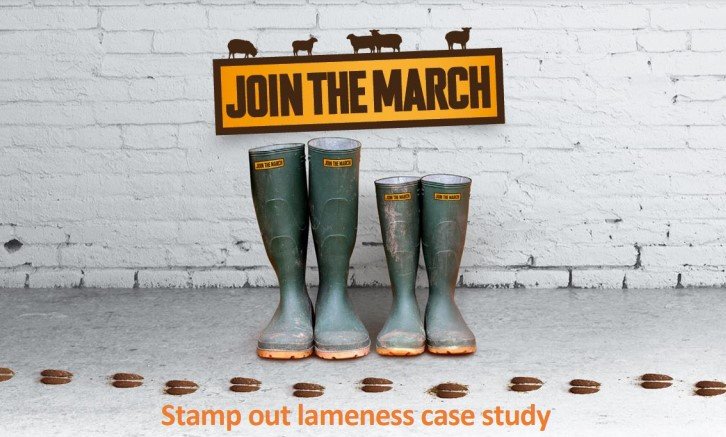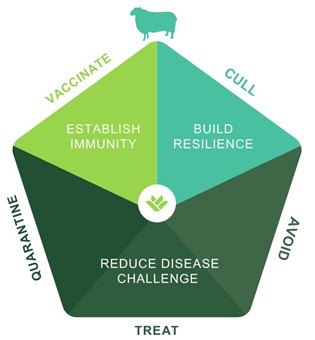Sheep Lameness Month

The run up to weaning is an ideal time to identify and note problems before any disease becomes more established. Check sheep’s feet regularly, as sheep with early stage footrot or contagious ovine digital dermatitis (CODD) have been known not to appear as being lame.
At weaning time, mark any persistently lame ewes for culling, and if flock replacements are home-bred, make sure breeding is only from sound ewes or ewe lambs that have not been lame.
Most sheep lameness in the UK is caused by the bacteria Dichelobacter nodosus, which can appear as scald or as footrot. If allowed to progress, it causes significant discomfort and welfare concerns due to the obvious pain. Becoming more widespread is CODD, caused by a treponeme bacteria, it has a progressive nature and in its later stages can cause severe lameness.
These are the two most important causes of lameness in UK sheep; they may be two different diseases yet are strongly associated in their infectivity and transmission routes1. Footrot is certainly a risk factor for CODD, so by keeping this widespread disease under control will help reduce the impact of CODD in the flock.
Recent work has looked at management practices that can reduce the levels of lameness found in a sheep flock. This includes the development of an industry accepted framework, the FAI Five Point Plan (5PP), to establish best practice for managing lameness in sheep.
Across the sheep farming community there is real momentum behind the 5PP and many have confirmed that by implementing it and sustaining it helps to keep flock lameness incidence down to 2% or less.
Vaccination is an aid to treating footrot and preventing lameness by stimulating immunity. Vaccination should be on a whole flock basis and timed to be given just before increased disease risk. It has also been demonstrated1, in mixed infections of footrot & CODD, that by managing footrot with vaccination first, has enabled more successful treatment and control of CODD.
Culling persistently infected sheep, especially at the start of a control programme, brings a reduction in lameness as these animals are “constantly shedding” infection.
Avoid disease transmission by paying attention to good hygiene, minimising the gathering of sheep, using footbaths* for disinfection and stopping trimming** infected feet – see below for more information.
Treating within 3 days should be the foundation of any protocol to reduce infectious lameness, both for welfare and infection control. Affected animals should be isolated for monitoring and to reduce disease spread.
Quarantine, a standard biosecurity procedure, should be for a minimum 4-week period. If any sheep shows signs of lameness during quarantine, isolate them and treat appropriately before being introduced to the flock.
Lameness remains a significant welfare and economic issue for sheep flocks in the UK. Adopting the Five Point Plan in its entirety has been shown to give the greatest chance of reducing lameness by a combination of standard farm practices that decrease the level of risk. Conversely, it has been seen that by dropping any one of the five management practices, there is often a resulting increase in the prevalence of lameness in the flock – that’s why it is called the Five Point Plan.
For more information go to the sheep health section of the DNOMF Website: https://www.msd-animal-health-hub.co.uk/DNOMF
Reference:
- Duncan J and Angell J (2019): Control of infectious lameness in sheep. Livestock, 24 (5). 246-251.

- 2nd July 2021
